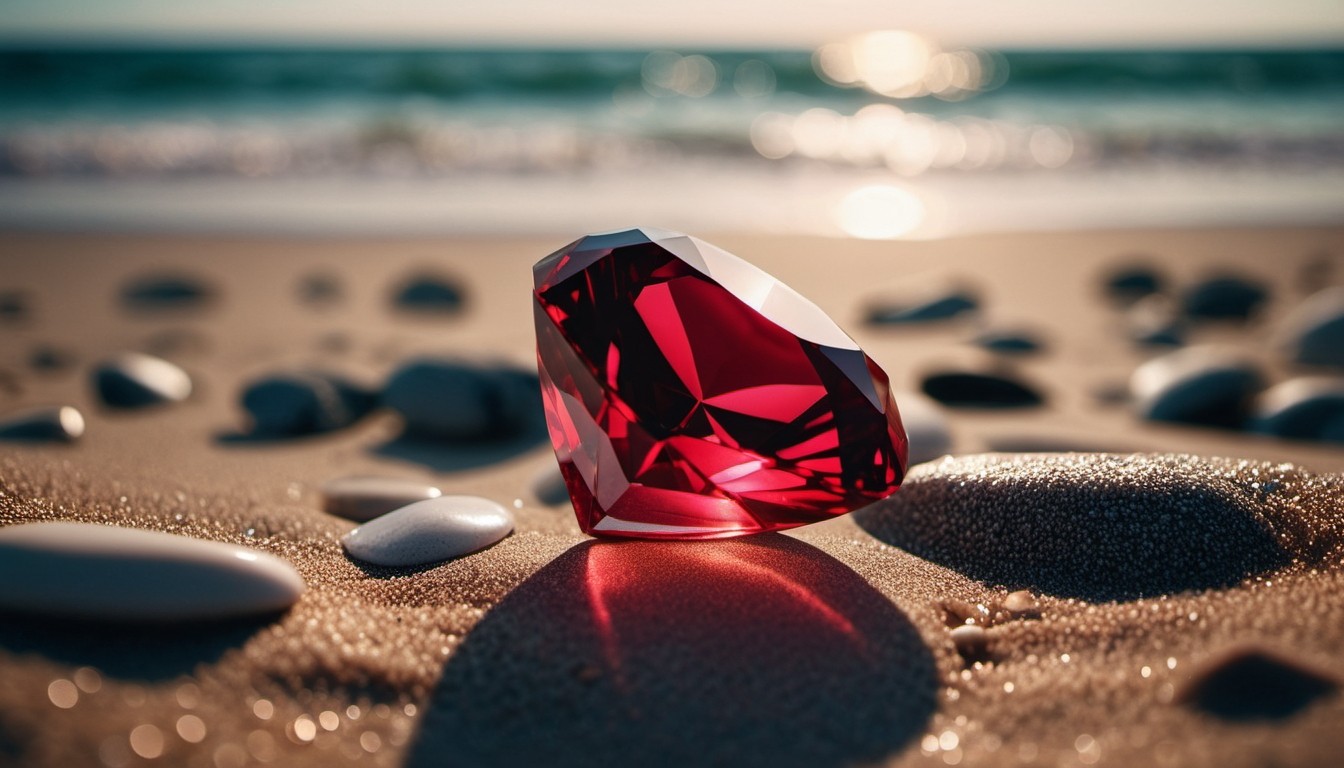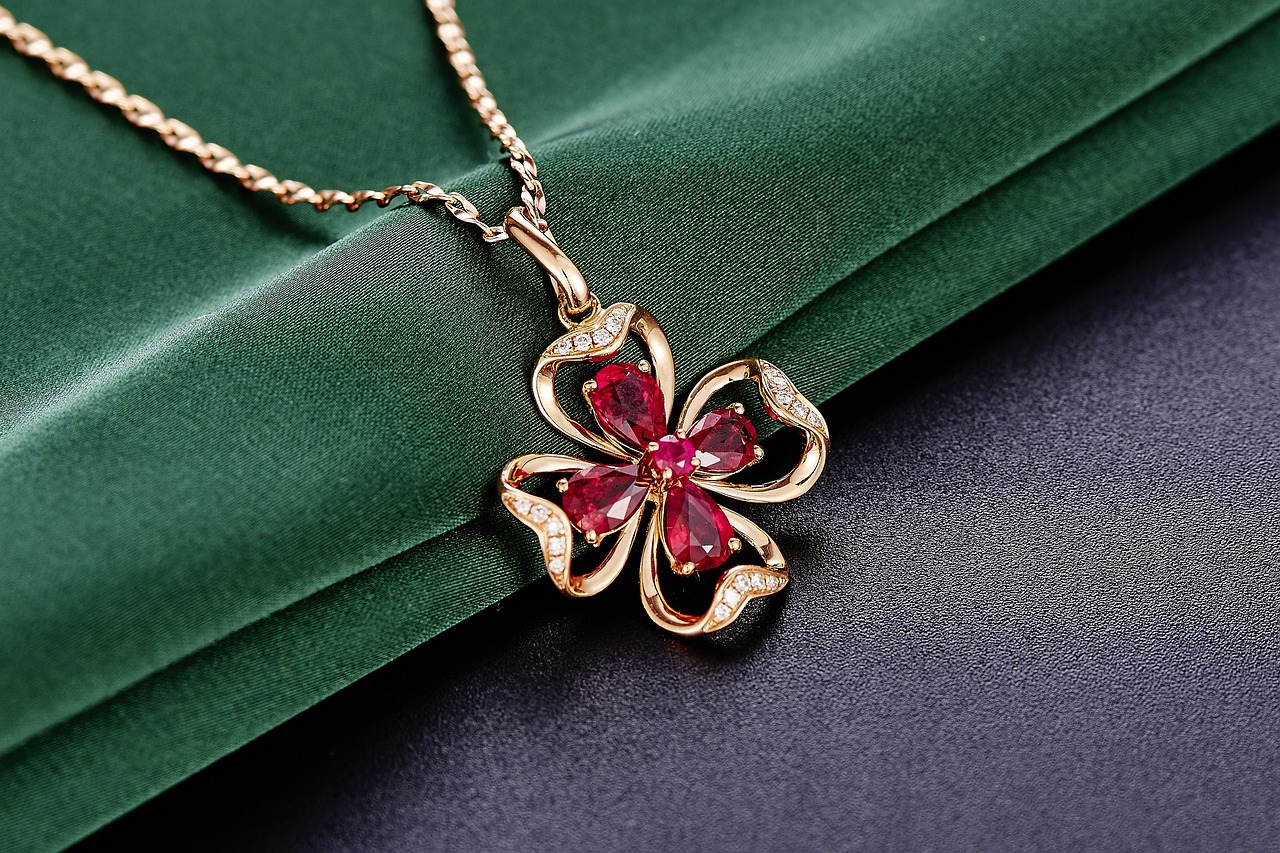Ruby is a captivating and valuable gemstone, celebrated for its vibrant red hues and rich history. This variety of corundum has been cherished for centuries, used in jewelry, royal regalia, and various decorative objects. Its striking appearance and reputed mystical properties make ruby a favorite among collectors and gemstone enthusiasts.
Discovery and History
Ruby derives its name from the Latin word “ruber,” meaning “red.” Throughout history, rubies have been prized by various cultures, symbolizing passion, protection, and prosperity. Ancient Hindus referred to ruby as the “king of precious stones,” believing it to be a powerful talisman. 
In medieval Europe, rubies were thought to bestow wisdom, health, and success in love. The gemstone has adorned the robes of royalty and the crowns of kings for centuries and continues to be a symbol of luxury and power.
Unique Formation and Composition
Ruby is a variety of corundum, specifically aluminum oxide (Al2O3). Its distinctive red color is primarily due to trace amounts of chromium. Rubies form in metamorphic rocks and alluvial deposits, often found as tabular or prismatic crystals. The presence of chromium also causes fluorescence in rubies, adding to their fiery brilliance under sunlight or UV light.
Colors of Ruby
Ruby is renowned for its range of red hues, which can include:
- Pigeon Blood Red: The most sought-after color, a vivid and pure red with a hint of blue.
- Crimson: Deep, rich red tones.
- Pinkish-Red: Lighter shades with a hint of pink.
- Purplish-Red: Red with undertones of purple.
- Brownish-Red: Darker reds with a hint of brown.
Sources and Mining Locations
Ruby can be found in several locations worldwide, with significant deposits in Myanmar (Burma), Thailand, Sri Lanka, and Mozambique. Burmese rubies are particularly renowned for their “pigeon blood” red color and exceptional quality.
Thailand is known for producing darker rubies, while Sri Lankan rubies often have pinkish tones. Mozambique has emerged as a major source of high-quality rubies in recent years, offering vibrant colors and excellent clarity.
Symbolism and Meaning
Ruby is associated with passion, protection, and prosperity. It is believed to enhance vitality, promote courage, and attract success. Many cultures use ruby as a talisman to protect against negative energies and bring good fortune.
The gemstone has long been considered a symbol of love and devotion, making it a popular choice for engagement rings and romantic jewelry.
Healing Properties
Ruby is reputed to have numerous healing properties:
- Emotional Healing: Promotes emotional balance, reduces fears, and encourages a positive outlook.
- Physical Healing: Believed to improve circulation, increase energy levels, and detoxify the body.
- Protective Energy: Shields against negative energies and psychic attacks.
- Spiritual Growth: Enhances intuition, spiritual insight, and meditation.
- Chakra Balancing: Used to balance and cleanse the heart and root chakras.
Care and Maintenance
Ruby is a durable gemstone with a rating of 9 on the Mohs scale of hardness, making it second only to diamond. It is resistant to scratches but should still be handled with care to prevent damage.
Clean ruby jewelry with warm, soapy water and a soft brush, avoiding harsh chemicals or ultrasonic cleaners. Store rubies separately to avoid scratching softer gemstones.
Horoscope Signs and Ruby
Ruby is particularly beneficial for certain horoscope signs, enhancing their natural traits and providing balance:
- Aries: Ruby helps Aries maintain their passion and energy while promoting courage.
- Leo: This stone aids Leos in expressing their creativity and boosting their confidence.
- Cancer: Ruby supports Cancers by enhancing their emotional resilience and protecting against negative energies.
- Sagittarius: It helps Sagittarians stay focused on their goals and attract success.
Interesting Facts
- Ruby is named after the Latin word “ruber,” meaning “red.”
- It is known for its striking red color, caused by trace amounts of chromium.
- Rubies have been used since ancient times in jewelry and royal regalia.
- Burmese rubies are renowned for their “pigeon blood” red color.
- Thai rubies are known for their darker hues, while Sri Lankan rubies often have pinkish tones.
- Rubies can be found in several countries worldwide.
- It is a variety of corundum, specifically aluminum oxide (Al2O3).
- Ruby is durable and resistant to scratches.
- Ruby is associated with passion, protection, and prosperity.
- It is believed to enhance vitality and attract success.
- Ruby provides protective energy, shielding against negative influences.
- The largest ruby deposits are found in Myanmar, Thailand, and Mozambique.
- Rubies come in various shades of red, from light pinkish-red to deep crimson.
- The “pigeon blood” red ruby is considered the most valuable.
- Rubies are used in Feng Shui to bring passion and vitality.
- The gemstone enhances spiritual insight and meditation.
- Rubies are considered symbols of love and devotion.
- The deep red color of ruby is due to trace amounts of chromium.
- Rubies were highly valued by ancient civilizations, including the Hindus and Europeans.
- Each piece of ruby jewelry is unique, with its own colors and patterns.
Ruby is a gemstone that captivates with its beauty, history, and powerful qualities. Whether you are a collector, a jewelry lover, or someone who appreciates the wonders of nature, ruby offers a fascinating glimpse into the earth’s geological processes.
Its vibrant red hues and reputed healing properties ensure that there is a ruby piece to suit every taste, making it a cherished gemstone around the world.
